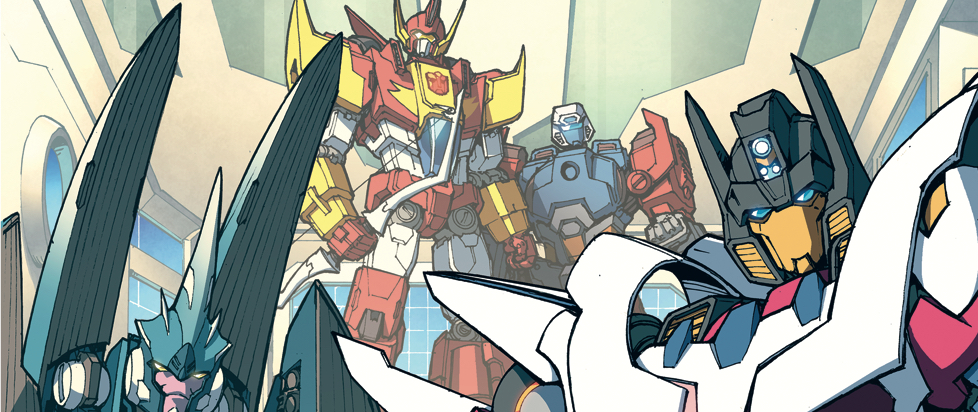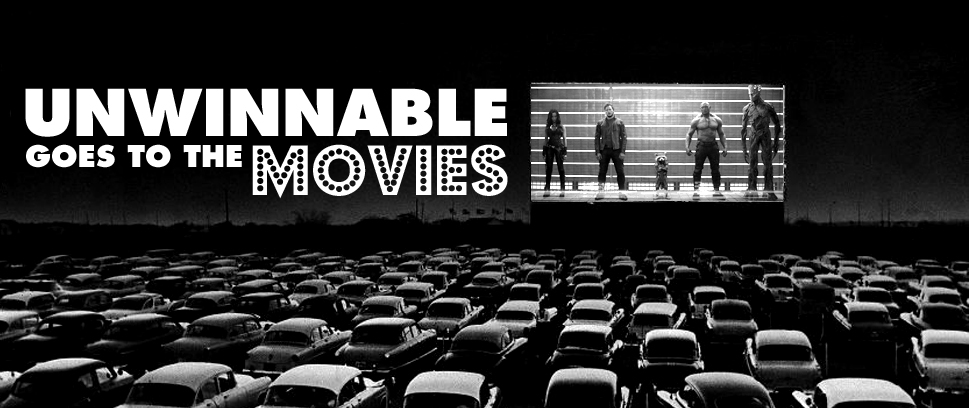
Transformers Lost Light Went Way Harder Than It Needed To
James Roberts’ Lost Light, formerly More Than Meets the Eye, recently concluded its six-year, 82-issue run at IDW, as part of the overall shuttering of its homespun Transformers G1 comics continuity.
The series is the absolute best thing to ever happen to Transformers, which, admittedly, is a low bar to clear. The fandom’s had to weather countless indignities in the past few decades, as rights-owners pursued continued market relevancy for what is, at the end of the day, a glorified toy commercial. Mention the phrase “Kiss Players” to a long-term Transformers fan and watch them go pale. But please, trust me on this – don’t google it.
My theory for why Transformers fandom has endured, despite cynical marketplace origins and routine brand mishandling, is that its original cartoon and comics continuity (produced by Sunbow and Marvel respectively) went way harder than it needed to. This is a toy line featuring vehicles who turn into angry robots; it did not need an elaborate backstory about how these angry robots have been at war with these other angry robots for millions of years, and they crash-landed on Earth and remained dormant for millennia until awoken by a volcanic eruption, and yet that’s just the first episode.
You can tell that the early writers struggled constantly with squaring this needlessly space operatic setup with the actual content of the series, which was often geared toward a younger audience (or at least, some producer’s highly specific ideas of what was appropriate for one). The Marvel comics enjoyed a little more license to be grim, creepy and filled with weird lore, but it’s really the continuity’s new life under IDW where it really came into its own. Simon Furman, notable writer from the Marvel comics who also penned much of the first waves of IDW’s G1 continuity, is credited for establishing much of their tone: half hard science-fiction, half sci-fantasy mysticism, full of warrior-poets and politics and permadeath.
Into this hotpot of genre tropes waded UK-based ascended fanwriter James Roberts, first as co-author for Nick Roche’s (also excellent) Last Stand of the Wreckers in 2010 and then as solo lead on More Than Meets the Eye. The series focused on once-and-former Autobot leader Hot Rod (well, Rodimus) and his motley crew of mainly tertiary characters few but the most devoted of Transformers fans would even recognize, as they crusade across time and space on a hunt for the fabled Knights of Cybertron.
So far, so boilerplate. But what’s interesting about MTMTE/Lost Light and its sister series by John Barber is that the action is set after the millennia-spanning war between the Autobots and Decepticons has ended and the two factions are struggling to reintegrate into a civilian society. So a lot of the issues directly tackle PTSD, fascism and the same ‘heroic’ militarism reproduced uncritically elsewhere in the continuity. This isn’t so much using giant robots as thinly-veiled metaphors for talking about Vietnam or whatever as it is unpacking all the shit Transformers itself has been guilty of.
[pullquote]There are married gay Transformers. There are trans lesbian Transformers. There is (sort of, kind of) a pregnant Transformer.[/pullquote]
The other really exciting thing about Lost Light, which is present to a lesser degree in Barber’s comics, is that finally, finally, it’s all about relationships.
There are a lot of couples. Most of them are queer: in a glorious inversion of decades of sexist worldbuilding and boys’ club isolationism, the series takes Transformers’ predominantly masculine-coded cast and concludes, sensibly, that if they’re going to pair off, it pretty much has to be with each other. There are married gay Transformers. There are trans lesbian Transformers. There is (sort of, kind of) a pregnant Transformer.
Oh, but don’t worry, the writers made sure to throw the hets a bone and stick a few straight couples in there. Mainly in the periphery. If you squint.
My point, though, is this: Every time I look at these comics, my inner 14-year-old who once got run out of a series of Transformers fan groups for being too girly fistpumps in righteous vengeance.
We have a habit of using the term “canon fanfiction” to describe authorized works that are too same-y or derivative. The new Star Wars films are ostensibly “canon fanfic” of the original trilogy, for instance, which I never really got. If anything, all the Expanded Universe stuff is the real “canon fanfic,” in both the literal sense (written by ascended fans), and the more figurative sense, as works that tailor to the interests the original authors never thought were worth catering to.
For decades, the prevailing wisdom in a lot of geek media was that Expanded Universes were seedbeds for a particular sort of fan, usually masculine-coded, almost always invested in action-oriented stories and tech spec porn. A lot of Transformers media reflects this sensibility, and there’s nothing intrinsically wrong with that, but it’s a mistake to believe it’s all anyone into Transformers could be after.
Many years removed from the marketing enterprise that gave birth to its overwrought lore, Transformers’ G1 “Expanded Universe” under writers like Roberts, Roche and Barber was able to pursue all the stories that I was told, growing up, were inappropriate and unsuitable. It’s the “canon fanfiction” I long felt ashamed for wanting, and it scratches all the right itches for me, from romance to body horror to puns that only work in a British accent.
With IDW shuttering its G1 continuity, my greatest worry is that we won’t see anything like this ever again. But maybe I should stay optimistic – it happened once already, which I would’ve thought a statistical improbability, and if it can happen to a fandom like Transformers, hell, it could probably happen to anything.




